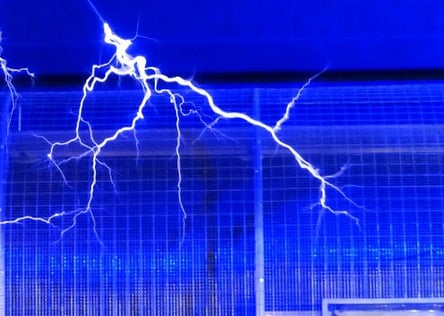 If your facility deals with sensitive electronic equipment—either manufactured circuit boards or other products, or sensitive computers that store important data—the last thing you want is a stray electrical charge to cause permanent damage. Likewise, if you work with flammable materials, a single spark can put your employees at risk of danger.
If your facility deals with sensitive electronic equipment—either manufactured circuit boards or other products, or sensitive computers that store important data—the last thing you want is a stray electrical charge to cause permanent damage. Likewise, if you work with flammable materials, a single spark can put your employees at risk of danger.
This is where an electrostatic dissipative (ESD) floor coating can save the day. Here’s a basic overview of how ESD floor coatings work.
Why static charges build
We’re all familiar with static shocks in every day life. Whether we’re walking across a carpet in thick socks or just feeling the side effect of dry winter weather, we may even be able to feel the charge building up before releasing in a sudden, stinging shock.
When two surfaces are in contact—in this case, your feet and the floor, electrons may pass from one to another. When they separate—that is, when you step away—the electron imbalance remains, and your body becomes slightly negatively charged. This charge builds up with each subsequent step until nature eventually finds a way to equalize it—usually via a shock when you touch another item, such as a doorknob, that’s positively charged.
Static shocks can be mildly annoying in everyday life, but for sensitive equipment it poses a real problem. And if a static charge is strong enough to be felt by an employee, it’s more than powerful enough to do irreparable damage a circuit board. A static shock may measure 20,000 volts—amazingly harmless for humans, but critically dangerous for electronics.
How an ESD floor coating works
If the flooring material is not electrically conducive (such as wood or vinyl), it’s far more likely to pass along the electrons that create static buildup.
ESD floor coatings, on the other hand, are epoxy- or urethane-based coatings that also contain electrically conducive particles—meaning they don’t pass along electrons easily upon contact. This minimizes the charge that can build up as people walk across the floor.
It also actively channels electrical charges away from employees and down into the ground itself, where they are neutralized.
Depending on the variety of ESD coating you choose, you may also need to implement other changes to your environment—such as requiring a certain type of footwear or making changes to the air quality in your facility.
An experienced floor coating specialist can help you determine exactly what your building needs for the best results. If you’re in the Southeastern U.S., someone at CPC Floor Coatings would be glad to talk with you and even take a look at your location. Call us at (864) 855-0600 or contact us online for a free consultation.
If you’d like to learn more about floor coating options, visit our main ESD Floor Coatings page, or click on the banner below to visit our floor coatings information hub.

